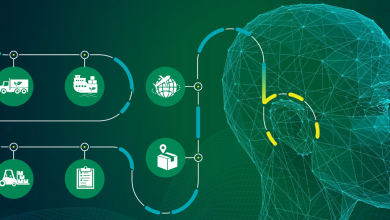
Organisations are facing leaner teams and fewer resources yet are challenged to scale and grow the business. Automation is often a solution to these challenges, and it’s become very much in vogue. But with hybrid cloud, edge computing, and local and remote data centres, leveraging automation successfully has been more difficult than many organisations realised.
With IT environments covering multi-cloud and on-premise, pre-production and production, coupled with increased security and data residency requirements, organisations are facing a tough reality of segregated environments, disparate services, and growing complexity. The management of these infrastructures takes increasing time and engineering toil, impacting the bottom line. Yet deploying and orchestrating automation into these environments and processes is not a trivial task.
The Uptime Institute’s 2022 Outage Analysis found a fifth of organisations suffered a serious or severe outage in the past three years – an upward trend. Additionally, outages costing above $100,000 have soared. And beyond the engineering cost in time and labour, the downstream effects of downtime can be unpredictable and costly for end users’ connected services, too.
Automation orchestrations from the cloud, with rules aligned to business goals, offer immense value by removing skilled engineering toil from both ongoing management and routine incident response. It also enhances the working experience, with the knock-on benefits of reducing burnout, while creating time for training, helping to further grow skill sets and overall business value. But while this is the goal of many businesses, without getting to a more mature use of automation, they’ll struggle to use automation as a precursor to an AIOps approach. This is where automation takes on routine tasks, with AIOps identifying system performance and reliability improvements and recommending actions in a virtuous flywheel.
Yet most automation wasn’t designed for this situation, working only in the environment it was built for. Engineers still find themselves manually running operations in each environment. For example, public and government agencies or financial institutions will separate sensitive networks from public access and for security, compliance and regulatory reasons. What these teams require is overall visibility across the entire IT infrastructure. They need to be able to administer distributed automation without duplicating work across environments.
Overall, the engineering team is lacking the visibility, security, and management tools allowing them to manage much-needed automation, thereby delegating execution within hybrid environments – consistently and simply. Process automation, linked to the smart use of AI support with AIOps, is the answer to this.
Making the most of hybrid cloud and distributed infrastructures
Isolated infrastructures are often created to meet security and regulatory requirements. But these then create access barriers that are incompatible with conventional automation tooling – and therefore unnecessary burden. The result is that engineering teams must toil to ensure service availability, reliability and operational compliance. Delivering this through manual labour while staying within budget is hard – bridging silos with manual effort takes time, investment and institutional knowledge. Additionally, manual work often leads to inconsistent outcomes – affecting stability and quality of service.
Requirements for zero trust security necessitates different architectures. Managing secure access at the network perimeter is becoming an anti-pattern. These factors include security threats as well as reactionary regulation, and infrastructure modernisation best practices. The need for seamless service is vitally important as users are not tolerant of poor experience due to poor security implementation. Manual break-fix in this world means risking employee productivity despite core business application functionality: increasing security but decreasing ease of use or accessibility risks users working around security, defeating the purpose. The world of zero trust, therefore, calls for trusted automation orchestrators to maintain quality of service.
Connected cultures and AI
Traditional siloed networks can be a barrier to efficiency if automation can’t be implemented across them. Access to data is the lifeblood of AI and LLMs. Connectivity and speed are key, and only through automation can the engineering team hope to maintain uptime and quality of service and control access to data, let alone carve out the time to develop innovative solutions. Moreover, not all automation is created equal. Without the intelligence provided by AI, organisations will struggle to achieve the highest levels of operational maturity and resilience. AI solutions offer air cover that removes the need for human intervention, particularly in ‘noise’ reduction, incident response, and faster MTTR.
When looking to incorporate the benefits of automated solutions that can bring confidence to engineering visibility, security, and infrastructure management, it’s imperative to track the right metrics to show where solutions are working as intended and prove value. A new key metric to track is “utility” – an equation between human hours invested and human hours saved. Where services operate faster or demonstrate greater resiliency by uptime, track and report how automated operations across cloud and data centre environments impact KPIs vs traditional approaches.
Creating cohesive and unified control over digital operations, having visibility, security, and trust over all IT assets, can only be maintained by a well-automated digital operation that can span zero trust security models. The most technically and culturally connected organisations must be highly digitally mature – built on automation that enables seamless integration and independent action. Only by automating layers of management, data and service delivery will businesses manage their digital assets and infrastructure in the distributed, cloud-first world. And where automation leads, AI will boost the speed and success of business outcomes.




